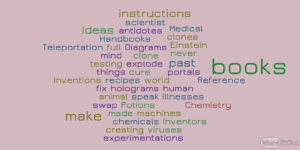I’ve recently spent time on three different projects, all of which – in different ways – tell a story about stories. One is a project I spent a day on; one has finished; the other is still on-going. All have revolved to some extent around a deep analysis of story and of the hope found within them.
Across three blogs, I’ll look in each case at what story is for, how the makers’ politics are informing it, and where that’s taking me in my own writing as I try and get a bit closer to what playwright Simon Stephens refers to as ‘your own writer’s myth’.
The third and final installment in this trio of blogs is not about my dramaturgy work (though that does come into it in some ways) – it’s about my writing, and my own contribution to Exeter-based Kaleider’s Ancient Sunlight project.
This project was brewing up over many years from within the company, but takes off soon with the publication of The Book of Ancient Sunlight: a work co-written by hundreds of schoolchildren and artists and comprising the Book of Love, the Book of Justice, the Book of Leadership, the Book of Food and the Book of Technology. They are being led and edited by print-makers, poets, visual artists, curators and playwrights.
The whole book is a response to the Age of Oil – the age we’re in now, and where we’re headed in the future. The Book of Technology was my responsibility.
After twenty-four hours’ worth of workshop material gathered from over fifty children (around 45 dense A4 pages), I elected to sit down and edit and shape – with minimal textual intervention of my own – the Book of Technology, which has ended up being a fictional inventor’s field notes of a collective design process, exploring one basic question: which technologies we should be pursuing in the future?
The workshop process embraced the whole gamut of possibilities. Do we pursue robotics? Genetics? Cyber-intelligence? Human-digital-networking? Global mechanics? Green energy industries? We considered science, aeronautics, digital technology, food manufacturing, environmental technologies, transport industry, nanobots… all the technologies. Or so I thought.
With a nod to last week’s writings about Leonora Carrington (although this moment pre-dates my encounter with her by about five months), at the point when the future predictions and visions of the children I’d worked with were at their most depressingly low – World War III, mass beheadings on the internet, technology that makes us dull and boring and sedentary, pollution everywhere – an eleven year-old girl turned round and said:
‘Well, in the future, I think love will be the technology we need most, because people will need to be connecting with one another, and if there isn’t any power or electricity to use computers and phones, then people will still need to connect and the most powerful technology we’ve got then for connecting people is love.’
You may be a cynic. You make make pukey-noises at that. You may.
I didn’t.
My heart leapt up and down and my stomach turned over. She did what I will refer to in the future as ‘a Leonora Carrington’. She changed my world view by taking what was there – an assumed fixed definition of technology – and rearranging it. She told a story, about the future.
This became the book’s outcome. The great human technology – storytelling, in all its forms – is the one that holds the most value, and the most hope for us, in the future.
These last three blog posts stemmed from playwright Simon Stephens’ suggestion that there is a need for all writers to identify what their core myth is. I’ve always backed away from ‘the magnitude of story’ as it seems so obvious – that’s all drama, all plays, it’s too vague. I should invent something contemporary and political and terribly right-on as my myth.
But when my reflections on these three projects collided, I suddenly got a sense of what that magnitude could do. Change people, change your assumed world view and re-arrange the cosmos as we know it.
I want to celebrate the idea that we are all storytellers of some kind, telling our own life stories to ourselves and to one another, and when we are at our most stuck is when we need somebody to come along, and do a Leonora Carrington on us. To take the world, throw its pieces in the air, and to re-tell – re-mythologise – the whole damn thing.
What is my mythology right now?
That if you want to change anything in the world, first of all you might have to tell a new story about yourself to the world.
Enjoy? You can read more like this every Monday on Lane’s List: a weekly subscriber email that in 2014 distributed over 600 opportunities and industry articles for UK-based playwrights. You can read a sample list or find out more here.
